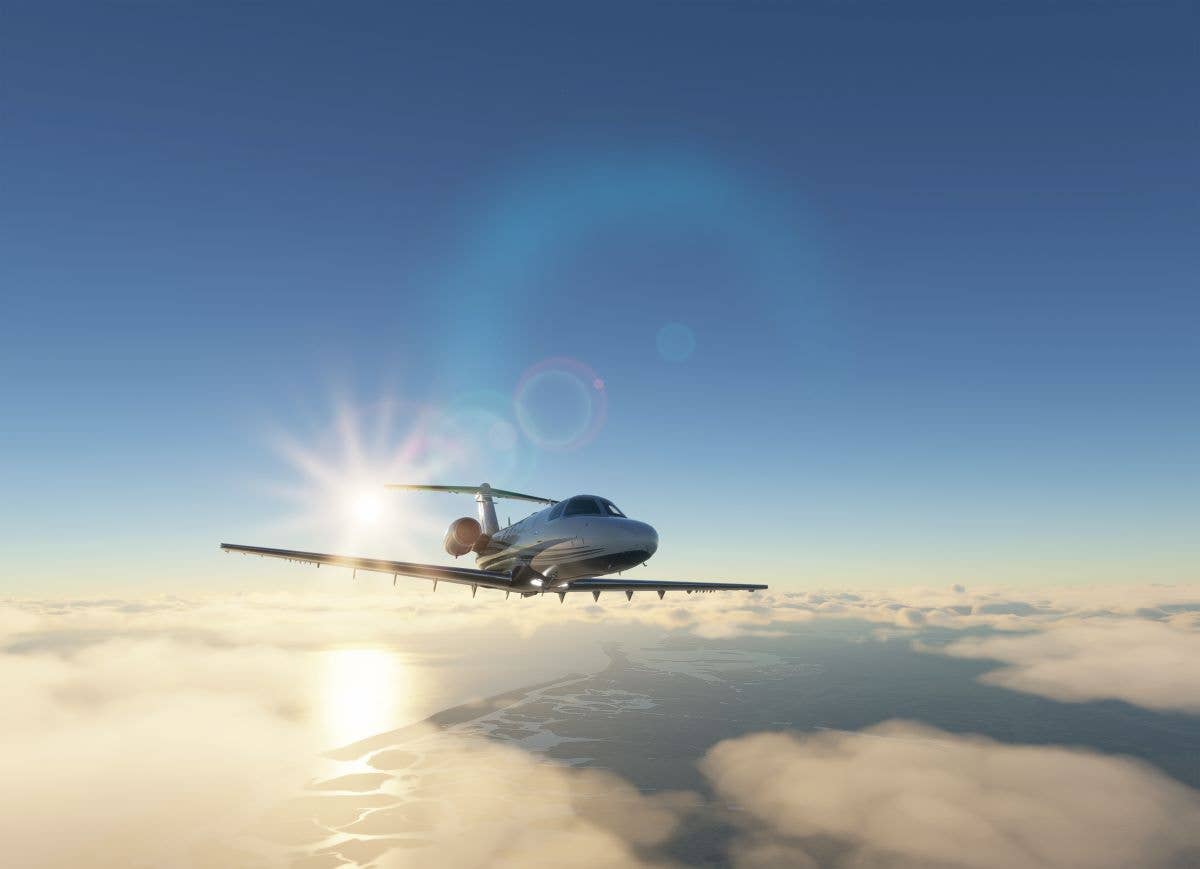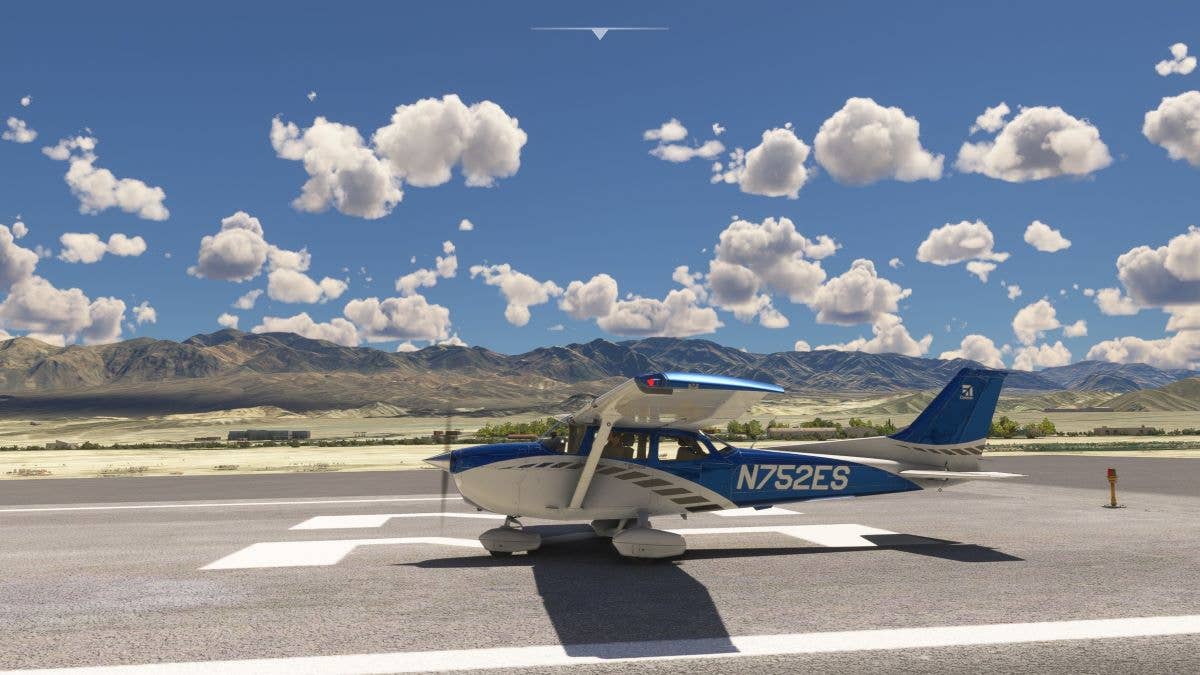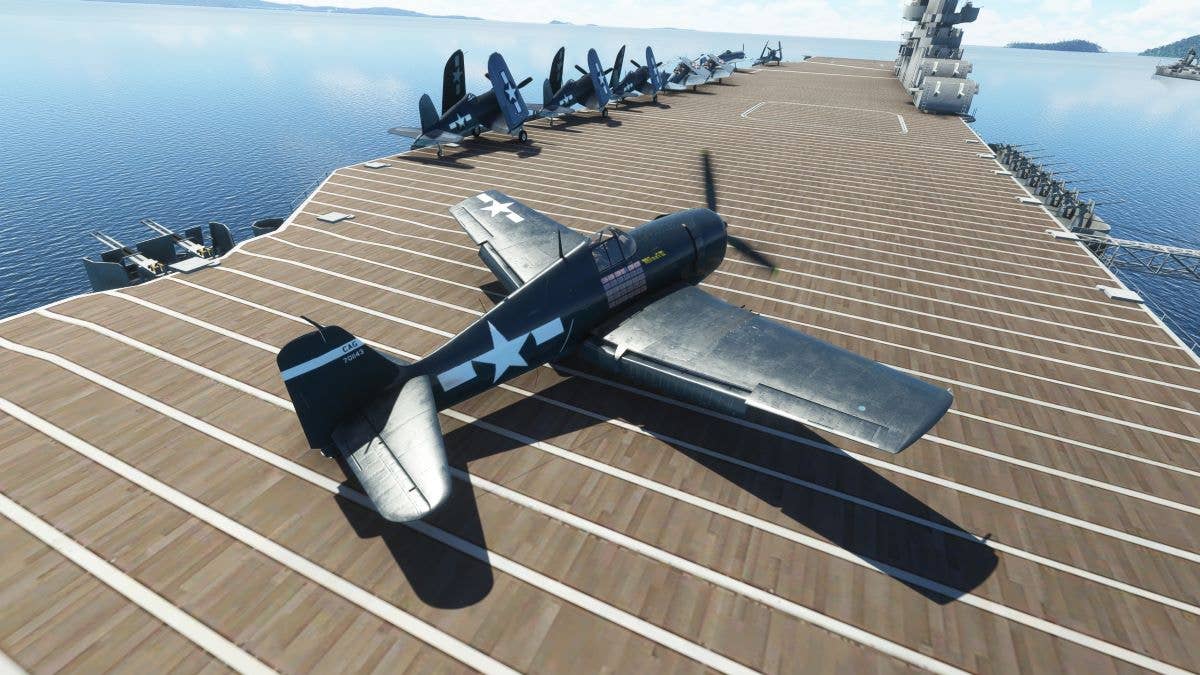Gaming to Keep the Dream Alive
A private pilot introduces his virtual world and the benefits of flight simulation.

[Courtesy: X-Plane]
I picked up my first copy of FLYING at the Concord Aviation Services FBO in the late 1990s, where I worked part-time to help pay for my flight training. My mom would dutifully drive me to work on the weekends since I began my employment there before I got my driver’s license. Concord Municipal Airport (KCON) in New Hampshire was an exciting airport in the summer, busy with general aviation activities, weekend flyers, and the occasional World War II aircraft.
If you're not already a subscriber, what are you waiting for? Subscribe today to get the issue as soon as it is released in either Print or Digital formats.
Subscribe NowThe FBO hosted a good amount of business jet traffic from two NASCAR races at New Hampshire Motor Speedway in nearby Loudon—the highlight each summer. The races brought in the latest Gulfstreams, Challengers, Learjets, and Beechcraft King Airs, with enough aircraft parked wing to wing to fill the runway closed for the occasion.
I quickly learned to love the smell of jet fuel in the morning, working the flight line, cleaning the restrooms, washing the hangar floors, and making the coffee. I had no idea how to make coffee back then, soI can only imagine what the FBO guests thought when they enjoyed a complimentary cup.
With my boss’s approval, I would pick up a spare copy of FLYING off the coffee table and take it home to read at night. On those pages, I connected with the aspirational world of aviation: sleek business jets, general aviation adventures, and flying wisdom from Collins, Abend, Garrison, Karl, and Lunken. The magazine helped keep my aviation dream alive as I pursued my private pilot certificate.
Many years before my first flight lesson, my grandfather took me to the airport. He flew the F4U Corsair for the U.S. Navy during WWII, and financially supported part of my flight training if I got good grades and wrote him a summary of every flight lesson. I was so fortunate to have his support. I soloed at 16 and planned to finish my private certificate during college, as the one I would attend had a flying club.
Starting my freshman year in September 2001, my world was full of opportunity and optimism. Unfortunately, after 9/11, the college flying club shuttered as CFIs at the nearby airport got laid off—and college life took me in new directions.
Finishing—Finding a Way
Like many of us, the itch to fly never abated, and I completed my private certificate in March 2011, 10 years after my first solo. Having been married the year before, I was grateful that my wife supported my dream-chasing ambition to go back to flying again—this time to finish what I started.
In 2012, I took my 88-year-old grandfather for a flight around Concord to celebrate the completion of my certificate. We spent the flight mostly in blissful silence. After some sightseeing, he flew some straight-and-level, made a few smooth and coordinated turns, then handed the controls back to me for a late summer afternoon landing on Runway 35. It was our first and last flight together, but remains a sublime memory I’ll hold onto forever.
In 2014, my wife and I started a family and—anticipating that this new phase of life may be disruptive to real-world flying—I began building a modest home simulator paired with X-Plane 10 software. Over the next year, I acquired the basic equipment, including a gaming PC, a 10-year-old joystick I had in college, some used rudder pedals, and a 5-year-old monitor I had in the basement.
I had not used any flight sim software since using the mid-90s version of Microsoft Flight Simulator, so the fidelity of X-Plane 10 amazed me. It definitely lived up to the YouTube reviews.
One of my first sim flights was shooting a practice approach at dusk in VFR conditions at KASH, my home airport at that time. Using my mouse to tune the ILS frequency on the nav/com, the X-Plane 10 Cessna 172 SP was equipped identically to the one I rented in real life. The warm glow of the panel, the fading light of a digital sunset, and the hum of the engine in my headphones made the experience feel real. The needle movement in the gauges was smooth. The occasional slight flutter caused by the vacuum system faithfully resurfaced in the sim, adding to the feeling of immersion.
I exercised mental checklists, scanned the instruments, and made pitch and power changes to establish and hold a stabilized approach through touchdown. After experiencing the airplane response to my inputs and nailing that first approach, I was swiftly bitten by this particular variant of the flying bug.
Return to MSFS?
In September 2020, in the midst of the first long year of COVID, Microsoft launched the much-anticipated return of Microsoft Flight Simulator 2020 when most of the world quarantined at home. I felt an overwhelming need to reconnect to aviation, and I eagerly unpacked the components of my sim that had been sitting dormant while my family and I relocated to neighboring Massachusetts.
My gaming PC was now six years old, but I could run the minimum settings for MSFS 2020 and try many of the fun landing activities, which generated a score based on your speed at touchdown, runway location compared to the target and the rollout distance. The gorgeous simulation features nearly photo-realistic scenery.
In early 2022, I set a goal of bringing my rusty radio work and airspace knowledge back up to speed. To accomplish this, I paired my updated X-Plane 11 flight sim software with the live air traffic control service called PilotEdge. PilotEdge staffs the service with real trained air traffic controllers who don’t suffer fools—or sim pilots who don’t prepare for their flights. As will be covered in future articles, the service also provides a series of challenging scenario-based activities called Communications and Airspace Training (CAT) flights that focus on VFR flying. Being a rusty pilot, I found that I needed to study to pass these flights—and I enjoyed the preparation required.
Often I would begin prepping a few nights before the flight, reviewing the accompanying YouTube video, and writing a flight plan, all in a very similar manner to how I prepared for a real-world flight.
Into the Bravo
The 11th and final flight in the CAT series was a ClassBravo departure from Los Angeles InternationalAirport (KLAX) and a Class B arrival at San Diego International Airport (KSAN). Having never departed or landed at a Class B airport in real life, and conducting the sim flight in an airspace occupied by other real sim pilots, watched over by real live air traffic controllers, I knew this flight would take my full mental effort.
After a busy and tense departure from KLAX and some not-so-perfect radio work, I landed rubber side down at KSAN and made my “clear of Runway 27” call. Within a few moments, the PilotEdge controller told me I had passed the CAT 11. I felt an overwhelming sense of accomplishment. Taxiing to Signature Flight Support in the simulation, I watched as a virtual airline Boeing 737, piloted by another real-world flight sim pilot, received his takeoff clearance and thundered down the runway.
Flying with other live aircraft and the accompanying radio chatter was an experience like no other. Sure, my feet never left terra firma, but my mind was really flying. The prep work to pass the final CAT flight was real, and using the correct phraseology on the radios and working through the three-dimensional problem-solving in real time to navigate the complex airspace of KSAN required my complete attention. The effort was real, even though the flight was virtual.
This is the value proposition provided by having a flight sim in your own home: You can focus on nearly any element of flying that you want to learn or practice and, by doing so, carve back some quality aviation time in your life. My goal has been to fly in my sim once or twice a week, usually starting at 10 p.m. to best minimize distractions.
I enjoy scenario-based training flights paired with live air traffic control, but a flight sim can be used simply for fun, exploration, and virtual sightseeing. You can visit almost any airport or enter any airspace in the world, in nearly any weather conditions, and do so in faithfully-recreated versions of hundreds of different airplanes made by enthusiasts or programmers who care about getting the details right. And just like the real airport environment, I’ve found the people involved in the flight sim community are passionate, welcoming, and genuinely want to help new sim pilots get started.
In future articles, the FLYING team will cover some flight sim “watch-outs” to help you avoid developing any bad habits. However, I believe that the upsides to flight simulation far outweigh the potential downsides. I am neither a high-time professional pilot nor particularly tech-savvy, but I believe that my sim will help me become a better pilot when I go back to real-world flying. In the meantime, it helps me keep the dream alive.
If this interests you, I encourage you to go explore the amazing digital world of flight simulation. Perhaps it will grow into a new hobby that helps to keep your own dreams of flying alight. There’s never been a better time to get started.
This article was originally published in the April 2023, Issue 936 of FLYING.

Subscribe to Our Newsletter
Get the latest FLYING stories delivered directly to your inbox







